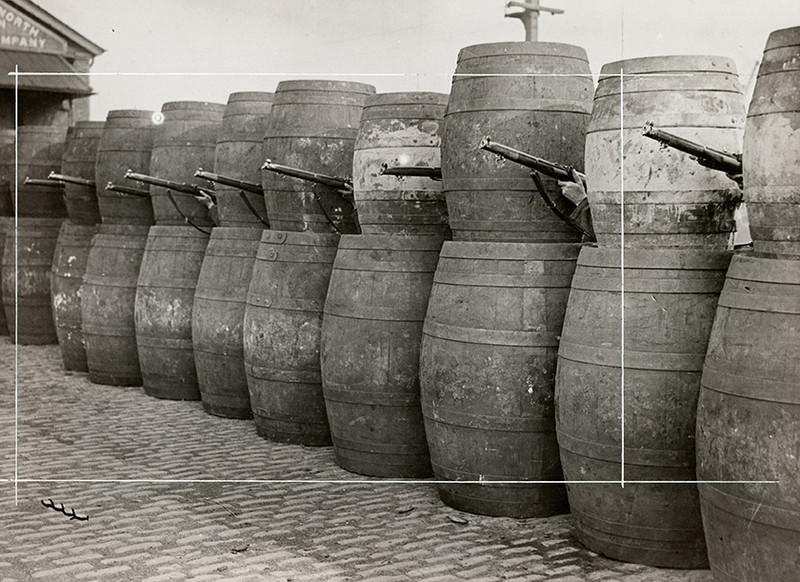The Easter Rising 1916
22 Jan - 03 Apr 2016
THE EASTER RISING 1916
Sean Sexton Collection
22 January - 3 April 2016
‘ The Photographers’ Gallery has taken the bold step of devoting a whole exhibition to the events of 100 years ago’
Alastair Smart, The Telegraph
Easter Rising 1916 is an exhibition drawn from Sean Sexton's photographic collection and curated by Luke Dodd.
This exhibition investigates the significant role played by photography in informing the national consciousness that led to Irish independence, using the 1916 rebellion as a central focal point. It features approximately eighty rarely seen photographs and ephemera, including souvenir postcards, albums, stereoscopic views, press and military photographs.
The exhibition encompasses a broad range of photographic documents of key events during the transformative years between the 1840s and 1930s. These include portraits of executed leaders, scrapbooks, collages and images of rebellion sites collected as memorabilia. Issues of authenticity and manipulation are explored in images of evictions and military drills - possibly staged for the camera. The contribution of women as active participants in the Rising is also addressed, as well as the women who practiced photography early in its development.
These photographic documents were utilised both by those fighting for and against autonomy from Westminster. For Nationalists, eviction images provided tangible evidence of British oppression, while pictures of Ireland’s pre-colonial archaeological monuments and contemporary rural life bolstered nationalist sentiments.
Conversely, British authorities and the Unionists in Northern Ireland circulated images of the Ulster Volunteer Force and loyal Irish recruits fighting on the front lines of WWI. These images were used to quash rumours of German support for Irish independence and to pave the way for the potential introduction of conscription.
Due to the complicated, costly and cumbersome nature of photography, when the rebellion finally broke out on 24 April 1916, the action itself was largely undocumented. Most of the surviving images were taken in the immediate aftermath and nearly all concentrate on the hostilities in and around the General Post Office on O’Connell St (then Sackville St). These stark scenes depict a bombed-out shell of Dublin, routinely referred to pre-rebellion as ‘the second capital of the Empire’.
Following six days of fierce clashes in which hundreds were killed and injured, the largely outnumbered rebel militias surrendered. Martial law was imposed across Ireland and leaders of the uprising were summarily executed. Before long their portraits, alongside photos of the site of execution in the prison yard at Kilmainham Jail, became widely available and informed a fresh groundswell of support for the Republican movement.
Subsequently, and in the brief lead up to the Civil War, photography played an extraordinarily powerful role in establishing archetypes such as the hunger striker, rebel, martyr, traitor and spy, while also elaborating on the Nationalists’ narratives which informed the new Irish Free State.
Sean Sexton Collection
22 January - 3 April 2016
‘ The Photographers’ Gallery has taken the bold step of devoting a whole exhibition to the events of 100 years ago’
Alastair Smart, The Telegraph
Easter Rising 1916 is an exhibition drawn from Sean Sexton's photographic collection and curated by Luke Dodd.
This exhibition investigates the significant role played by photography in informing the national consciousness that led to Irish independence, using the 1916 rebellion as a central focal point. It features approximately eighty rarely seen photographs and ephemera, including souvenir postcards, albums, stereoscopic views, press and military photographs.
The exhibition encompasses a broad range of photographic documents of key events during the transformative years between the 1840s and 1930s. These include portraits of executed leaders, scrapbooks, collages and images of rebellion sites collected as memorabilia. Issues of authenticity and manipulation are explored in images of evictions and military drills - possibly staged for the camera. The contribution of women as active participants in the Rising is also addressed, as well as the women who practiced photography early in its development.
These photographic documents were utilised both by those fighting for and against autonomy from Westminster. For Nationalists, eviction images provided tangible evidence of British oppression, while pictures of Ireland’s pre-colonial archaeological monuments and contemporary rural life bolstered nationalist sentiments.
Conversely, British authorities and the Unionists in Northern Ireland circulated images of the Ulster Volunteer Force and loyal Irish recruits fighting on the front lines of WWI. These images were used to quash rumours of German support for Irish independence and to pave the way for the potential introduction of conscription.
Due to the complicated, costly and cumbersome nature of photography, when the rebellion finally broke out on 24 April 1916, the action itself was largely undocumented. Most of the surviving images were taken in the immediate aftermath and nearly all concentrate on the hostilities in and around the General Post Office on O’Connell St (then Sackville St). These stark scenes depict a bombed-out shell of Dublin, routinely referred to pre-rebellion as ‘the second capital of the Empire’.
Following six days of fierce clashes in which hundreds were killed and injured, the largely outnumbered rebel militias surrendered. Martial law was imposed across Ireland and leaders of the uprising were summarily executed. Before long their portraits, alongside photos of the site of execution in the prison yard at Kilmainham Jail, became widely available and informed a fresh groundswell of support for the Republican movement.
Subsequently, and in the brief lead up to the Civil War, photography played an extraordinarily powerful role in establishing archetypes such as the hunger striker, rebel, martyr, traitor and spy, while also elaborating on the Nationalists’ narratives which informed the new Irish Free State.

